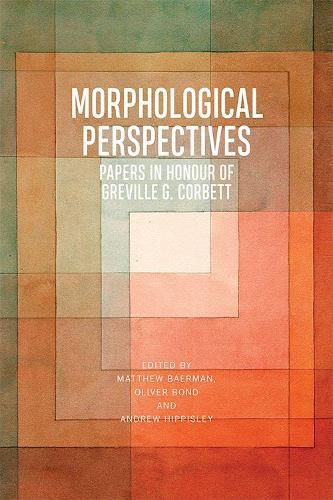Readings Newsletter
Become a Readings Member to make your shopping experience even easier.
Sign in or sign up for free!
You’re not far away from qualifying for FREE standard shipping within Australia
You’ve qualified for FREE standard shipping within Australia
The cart is loading…






In a field still dominated by syntactic perspectives, it is easy to overlook the words that are the irreducible building blocks of language. Morphological Perspectives takes words as the starting point for any questions about linguistic structure: their form, their internal structure, their paradigmatic extensions, and their role in expressing and manipulating syntactic configurations. With a team of authors that run the typological gamut of languages, this book examines these questions from multiple perspectives, both the canonical and the non-canonical. By taking these questions seriously, and letting loose a full battery of analytical techniques, the following chapters not only celebrate the pioneering work of Greville G. Corbett but present new thinking on traditional approaches, including the paradigm, deponency and morphological features.
$9.00 standard shipping within Australia
FREE standard shipping within Australia for orders over $100.00
Express & International shipping calculated at checkout
In a field still dominated by syntactic perspectives, it is easy to overlook the words that are the irreducible building blocks of language. Morphological Perspectives takes words as the starting point for any questions about linguistic structure: their form, their internal structure, their paradigmatic extensions, and their role in expressing and manipulating syntactic configurations. With a team of authors that run the typological gamut of languages, this book examines these questions from multiple perspectives, both the canonical and the non-canonical. By taking these questions seriously, and letting loose a full battery of analytical techniques, the following chapters not only celebrate the pioneering work of Greville G. Corbett but present new thinking on traditional approaches, including the paradigm, deponency and morphological features.